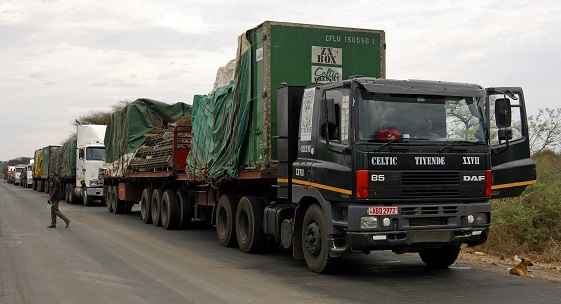
Streamlined customs clearance in East Africa in recent years has helped increase regional trade (photo: Guenter Fischer imageBROKER/Newscom).
East Africa Moving Toward Monetary Union
December 20, 2016
Five East African countries have joined forces with the aim of forming a single currency area by 2024.
Since the project’s inception in 2000, Kenya, Uganda, Tanzania, Burundi, and Rwanda have been laying the groundwork for greater economic integration. Measures such as establishing a Customs Union has helped streamline border clearances, simplify work permit issuance, and ensure the recognition of professional agreements by member countries. As a result, regional trade has increased by over 40 percent in the last five years.
Speaking at a conference on regional integration in Arusha, Tanzania, Abebe Aemro Selassie, head of the IMF’s African department, said while GDP growth in the East African Community is well above average for sub-Saharan Africa, the challenge will be how to sustain this strong growth over the medium-term, how to ensure that scaled-up public investment and borrowing translates into durable growth and not unserviceable debt, and how to make the growth felt by a wider segment of the population.
“Faster economic integration within the East African Community is a potential game changer, as it holds the promise of improved productivity, competitiveness, and welfare gains,” Selassie said.
Monetary unions and common currency areas are not new to Africa. The West African Economic and Monetary Union, for one, was formed in 1994 and shares the CFA franc among eight West African countries, while Namibia, Swaziland, and Lesotho have been linking their currencies to the South African rand under a Common Monetary Area established in 1986.
Roger Nord, IMF deputy director of the African department, in his presentation, drew from past experiences in Africa and, more recently, in the euro zone, and emphasized the need for a greater focus on macroeconomic convergence—safeguarding regional economies from excessive fluctuations caused by external factors. “Fiscal deficits remain high and international reserves in most of the East African Community countries fall short of the agreed targets set by central banks,” Nord said.
Participants also discussed the need for a robust framework to deal with potential financial sector risks associated with a monetary union. Standardizing monetary policy regimes, moving toward inflation targeting, and integrated payments systems using financial technology such as mobile money, were all seen as essential parts of the ongoing reform agenda.
Some participants expressed concern, however, whether supervisory and regulatory capacity could keep pace with financial integration and innovation in the region. The experience of existing monetary unions has shown that reaching agreement on financial supervision and union-wide resolution frameworks can be difficult. The IMF said it will continue providing technical assistance to design and implement an appropriate financial sector regulatory and supervisory architecture for the region, that will help ensure a successful transition to a monetary union.







